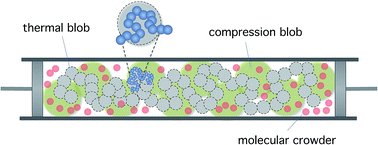Polymers under confinement: single polymers, how they interact, and as model chromosomes
Abstract
How confinement or a physical constraint modifies polymer chains is not only a classical problem in polymer physics but also relevant in a variety of contexts such as single-molecule manipulations, nanofabrication in narrow pores, and modelling of chromosome organization. Here, we review recent progress in our understanding of polymers in a confined (and crowded) space. To this end, we highlight converging views of these systems from computational, experimental, and theoretical approaches, and then clarify what remains to be clarified. In particular, we focus on exploring how cylindrical confinement reshapes individual chains and induces segregation forces between them – by pointing to the relationships between intra-chain organization and chain segregation. In the presence of crowders, chain molecules can be entropically phase-separated into a condensed state. We include a kernel of discussions on the nature of chain compaction by crowders, especially in a confined space. Finally, we discuss the relevance of confined polymers for the nucleoid, an intracellular space in which the bacterial chromosome is tightly packed, in part by cytoplasmic crowders.


 Please wait while we load your content...
Please wait while we load your content...